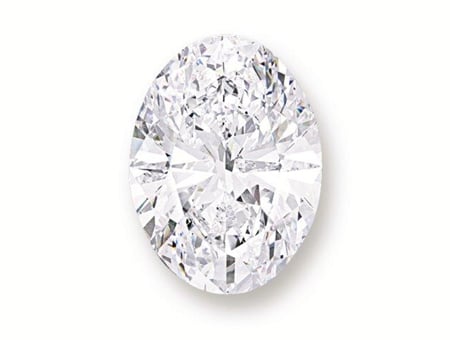
The year 2013 was a great one for the Fine Art market. Artworks achieved record prices at auction, including Andy Warhol’s Silver Car Crash Double Disaster, which sold at Sotheby’s for US$105.4 million, and Francis Bacon’s Three Studies of Lucian Freud, which sold at Christie’s for US$142.4 million.
The Fine Art market tends to be much more dynamic than the Decorative Art market, which does not attract the same kind of media attention or risk-taking celebrity bidders.
Consistently, the most sought-after items in Decorative Art auctions seem to be jewelry and rare objects of Asian and Persian origin. Bidding on Decorative Art is mostly driven by pre-assigned factors, such as condition, provenance, and scarcity value. Those factors are less likely to drastically change over time, and therefore offer less room for speculative collectors.
As for Chinese Decorative Art, the media can certainly increase interest in collecting Chinese porcelain and furniture, but the actual demand is usually driven by connoisseurship. According to artnet’s Chinese Decorative Art editor, Helen Bu, objects also achieve record prices because Chinese collectors like to see cultural property return to their native country. Status and prestige play a role, but collectors are less susceptible to external factors in the market, such as the perceived investment value.
The Decorative Art market appears to be driven by connoisseurship and personal interest in an object due its rarity, historical value, or uniqueness within a collecting category. Impressive provenance and academic references support the credibility and importance of an object. Decorative Art tends to appeal to the conservative bidder, whereas Contemporary Art is more accessible to newcomers and buyers interested in the investment and resale value of an artwork.
The Pink Star, one of the World’s Great Natural Treasures, sold Sotheby’s Geneva for US$83,351,534
The Princie Diamond, sold at Christie’s New York for US$39,323,750
This diamond traces its noble provenance back to the Nizams of Hyderabad, rulers of the South Central state in India, and has been untouched since it was mined over 300 years ago.
A Sickle-Leaf, vine scroll and palmette ‘Vase’-technique carpet, probably Kirman, Southeast Persia, c.1600–1650, sold at Sotheby’s New York US$33,765,000
The sickle-leaf design is the rarest of ‘vase’ technique carpet patterns; this example appears to be the only one with a red ground.
A spectacular oval diamond of supreme importance, sold at Sotheby’s Hong Kong for US$30,779,547
Weighing 118.28 carats, this piece, discovered in South Africa in 2011, set the auction record for a white diamond. 100 carat diamonds are very rare, and only a few have appeared and sold at auction. This oval diamond is the largest diamond ever to be offered for sale at auction, and the largest diamond in the world as graded by the Gemological Institute of America.
An outstanding and highly important massive gilt-bronze figure of a seated Shakyamuni Buddha, mark and period of Yongle, c.1403–1424, sold at Sotheby’s Hong Kong for US$30,491,076
This figure was designed by one of the imperial workshops during the Yongle period, and is considered to be one of the most important works of art from the Buddhist world. It is characterized by an elaborate casting, as well as a rich golden hue. The stylistic origin of the Yongle Buddha goes back to the Yuan dynasty (1271–1368) when Tibetan Buddhism became the court religion.
A spectacular and highly important diamond, sold at Christie’s Geneva for US$26,733,888
A sublime blue and white ‘palace’ bowl, mark and period of Chenghua, sold at Sotheby’s Hong Kong for US$18,214,175
From the collection of Lord Cunliffe, Chenghua porcelains are among the most original and elaborate objects, and represent outstanding craftsmanship and artistry. The Cunliffe bowl is one of the rare palace bowls that were made for only a few years toward the end of the Chenghua reign during the 1480s. Palace bowls are characterized by fine proportions, a soft touch, and an elegant, simple blue design with flowers or fruit. This bowl is one of only two bowls of this design that are privately owned, the remaining 11 are in museum collections.
Exceptional Pear-Shaped Diamond, sold at Sotheby’s New York for US$14,165,000
The Bay Psalm Book, 1640, sold at Sotheby’s New York for US$14,165,000
The Bay Psalm Book is believed to be the first book printed in North America in 1640 in Cambridge, MA. The psalms are metrical translations in English, and are valuable pieces of American Puritan history. Previously owned by the Old South Church in Boston, it was purchased by the American financier and philanthropist David Rubenstein, who planned to loan it to libraries across the country.
A Fine and Magnificent Celadon-Glazed ‘Longevity’ Ruyi-Handled Vase, Seal Mark and Period of Qianlong, c.1736–1795, sold at Sotheby’s Hong Kong for US$11,425,771
This piece is outstanding for its unusual shape, its fine celadon glaze, and the elaborate relief that reveals an auspicious birthday message. Only one comparable piece appears to exist in the Baur Collection in Geneva, Switzerland.